It looks like you're using an Ad Blocker.
Please white-list or disable AboveTopSecret.com in your ad-blocking tool.
Thank you.
Some features of ATS will be disabled while you continue to use an ad-blocker.
18
share:
I've come across a couple of early Sumerian seals, Jemdet Nasr period, which now make it possible to identify certain enigmatic seals of women
performing various tasks which i'd previously pondered upon here, it had seemed
likely these represented a constellation but which one it wasn't possible to make any possible identification without more contextual evidence, but
with these it is.
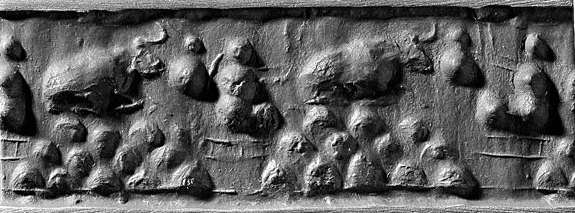
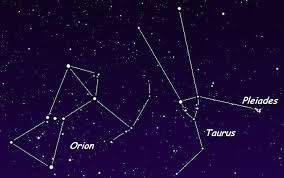
There we see the bull/cow of Heaven Taurus above the mountain of the horizon and the figure seen in conjunction in terms of natural position would be Orion. In terms of that relationship it can be seen how the figure has been derived directly from observation of the overall Orion constellation. The other example again seems to be in conjunction with Taurus, a bulls head seen frontal with solar disc above.
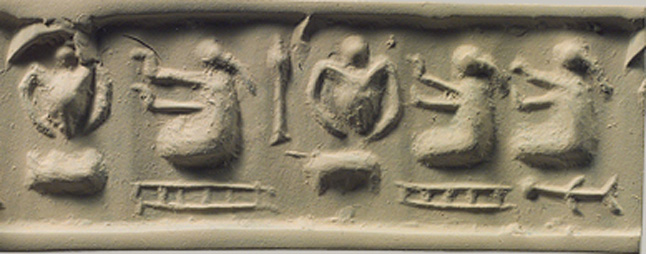
The figure there is perhaps seen holding rattles and greeting the sun rising in Taurus, the start of the New Year, but it is a feature of the figures that the extended arms are seen performing a variety of tasks in the various examples. The 'ladder' or platform the figure can be seated upon is the same as seen in pre-dynastic Egypt and indicates the segmented horizon always in conjunction with a constellation, and also in these seals the rounded indentations will be stylized motifs of the component stars of the constellation.
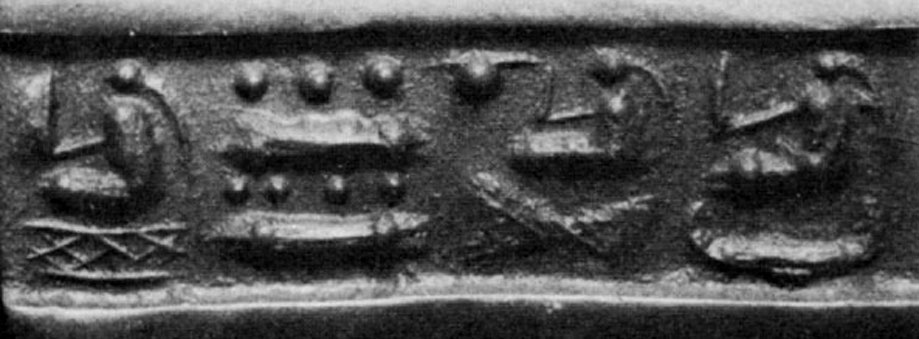
That the earliest Sumerian identification of the Orion constellation was female there is no doubt as i pointed out in The Sumerian Orion mystery, albeit i was unable to provide an actual Sumerian representation of such at the time, but now it seems clear these Jemdet Nasr seals represent Nin-shubur as Orion.

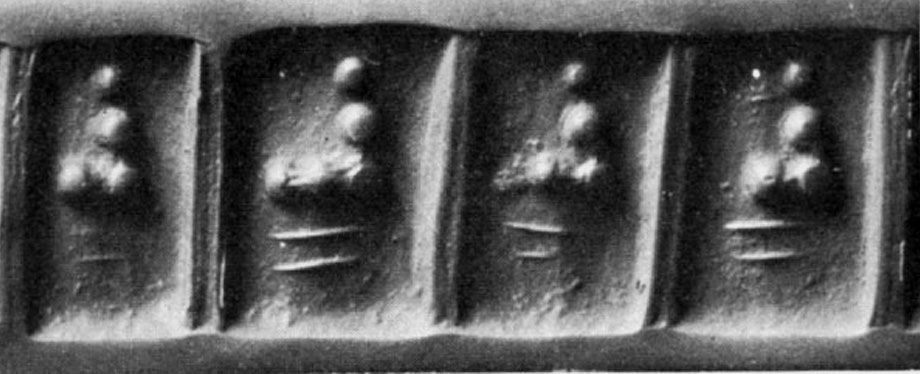
The many tasks she is seen performing seem to include collecting and gathering of a sacred plant, grinding and mixing, weaving and spinning, playing of instruments, multi-tasking seemingly an important facet of her role.

...the servant, who is acquainted with the secrets of An, Ninsubura the chief servant, the shining crown of heaven, the messenger of good tidings, the goddess who turns what affects me into something good, who loves the directions of An and with out whom Enlil does not give orders to the great gods

My faithful minister of the E-ana, my Ninšubur of the E-ana, (you said ) "I, the august minister of the universe, I, Ninšubur of the universe, the faithful minister of the Anuna gods, Ninšubur of the Anuna gods, the faithful minister, Ninšubur, the personal god of the Land, the faithful minister, Ninšubur, the mother of the Land, I will ride high in joy."
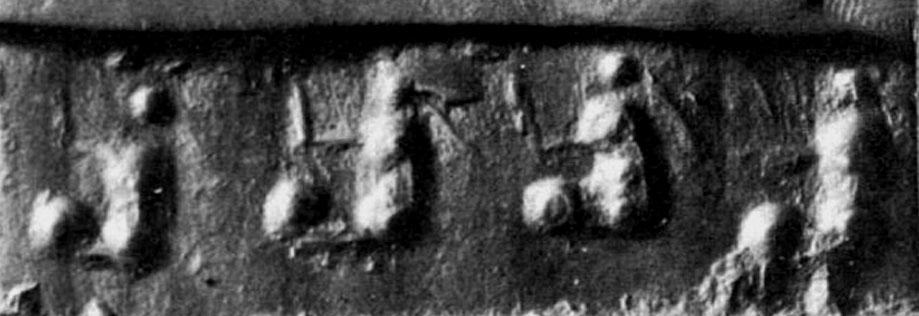

So many examples then of this oldest identifiable representation of Orion indicating the importance of her cult at the time.


There we see the bull/cow of Heaven Taurus above the mountain of the horizon and the figure seen in conjunction in terms of natural position would be Orion. In terms of that relationship it can be seen how the figure has been derived directly from observation of the overall Orion constellation. The other example again seems to be in conjunction with Taurus, a bulls head seen frontal with solar disc above.

The figure there is perhaps seen holding rattles and greeting the sun rising in Taurus, the start of the New Year, but it is a feature of the figures that the extended arms are seen performing a variety of tasks in the various examples. The 'ladder' or platform the figure can be seated upon is the same as seen in pre-dynastic Egypt and indicates the segmented horizon always in conjunction with a constellation, and also in these seals the rounded indentations will be stylized motifs of the component stars of the constellation.

That the earliest Sumerian identification of the Orion constellation was female there is no doubt as i pointed out in The Sumerian Orion mystery, albeit i was unable to provide an actual Sumerian representation of such at the time, but now it seems clear these Jemdet Nasr seals represent Nin-shubur as Orion.

Among the divine viziers Nin-subur is the earliest and most important one, and, unlike the others of her kind, she is related to her masters not as cause and effect but rather as command and execution; in other words, she owes her importance not to the natural phenomena which her masters embody, but to the metaphor of the cosmos as a state, she is the "director" of the heavenly estate and the Anuna gods

The many tasks she is seen performing seem to include collecting and gathering of a sacred plant, grinding and mixing, weaving and spinning, playing of instruments, multi-tasking seemingly an important facet of her role.

...the servant, who is acquainted with the secrets of An, Ninsubura the chief servant, the shining crown of heaven, the messenger of good tidings, the goddess who turns what affects me into something good, who loves the directions of An and with out whom Enlil does not give orders to the great gods

My faithful minister of the E-ana, my Ninšubur of the E-ana, (you said ) "I, the august minister of the universe, I, Ninšubur of the universe, the faithful minister of the Anuna gods, Ninšubur of the Anuna gods, the faithful minister, Ninšubur, the personal god of the Land, the faithful minister, Ninšubur, the mother of the Land, I will ride high in joy."

In all third millennium sources which contain evidence for the gender of Ninsubur, the deity is only female: she is called ama "mother" in Pre Sargonic and Ur III
The name then translates "the indestructible,immovable mother," or "the mother who doesn't go away.", so even if it meant having to marry herself she wasn't going anywhere...
But it is these qualities that give best indication as to the origins of Nin-subur which otherwise scholars draw a blank on. Two first millennium passages gloss NIinsubur with bel er eti "Lady of the Earth/ netherworld" , an Earth Goddess the "lady of wide seed/offspring"

So many examples then of this oldest identifiable representation of Orion indicating the importance of her cult at the time.
a reply to: Harte
That's the constellation Bootes...
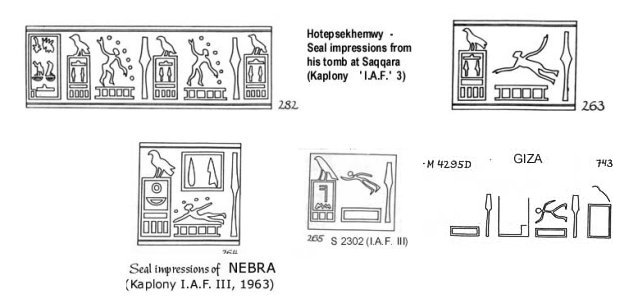
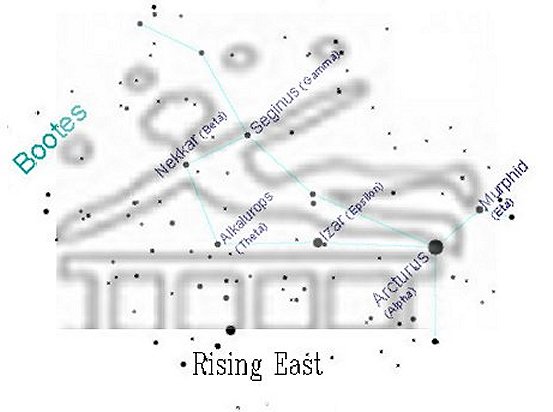
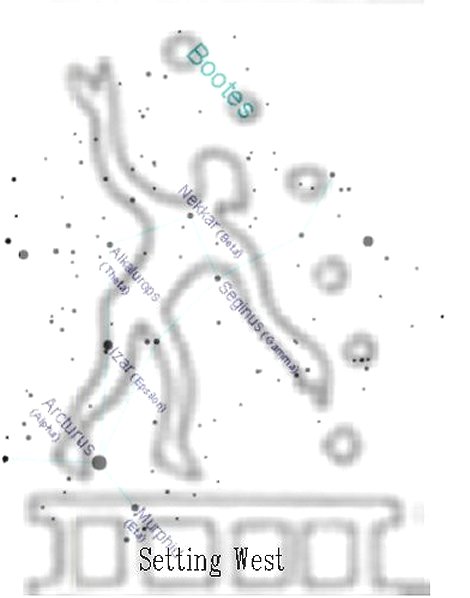
In Egypt SAH represented this Northern constellation in the form of the man with arm raised, during the Middle Kingdom this was translated also onto Orion such that Orion became SAH of the Southern skies, but the oldest forms will be Bootes.
What is important is establishing a contextual relationship in order to make clear identification, with the Jemdet Nasr seals i believe that is now there and this is important. The Greeks also had the dual Orion-Bootes confusion, were the former had taken on the configuation of the latter.
It's important then to be cautious with any ancient depicitions of the figure with the raised arm and consider this as relating to the modern interpretation of Orion which derived from Bootes, which is why i reckon these Sumerian versions as the oldest that can be contextually identified as Orion.
That's the constellation Bootes...



In Egypt SAH represented this Northern constellation in the form of the man with arm raised, during the Middle Kingdom this was translated also onto Orion such that Orion became SAH of the Southern skies, but the oldest forms will be Bootes.
What is important is establishing a contextual relationship in order to make clear identification, with the Jemdet Nasr seals i believe that is now there and this is important. The Greeks also had the dual Orion-Bootes confusion, were the former had taken on the configuation of the latter.
Arkturos is mentioned twice, W. 566 and 610. By Arkturos Hesiod means the same as Homer by Bootes; in later Greek he is also called Arktophylax, and Aratus seems to use Arktophylax for the Constellation, and Arkturos, just as we do, for its brightest star; Arat. Phen. 91 seqq., ‘Behind Helike moves, like to one driving, Arktophylax, whom men also call Bootes, since he appears to lay his hands on the wain-like Bear; all of him is very conspicuous, but under his belt rolls brightly the star Arkturos himself.’ The Schol. on this passage says that Arktophylax was an Arkadian, son of Zeus and Kallisto, and that he was brought up by a goatherd on Mount Lykaion, and being with his mother in danger of his life, Zeus in pity turned him into a star. He adds, ‘This is said to be Arktophylax, Bootes, Orion, . . . and also he is called Trugetes (Vintager). Theon and Hesychios also call Bootes Orion, and it has been suggested that there were two Orions, Bootes being one.
It's important then to be cautious with any ancient depicitions of the figure with the raised arm and consider this as relating to the modern interpretation of Orion which derived from Bootes, which is why i reckon these Sumerian versions as the oldest that can be contextually identified as Orion.
edit on Kam630166vAmerica/ChicagoMonday1630 by Kantzveldt because: (no reason given)
a reply to: Kantzveldt
Yet another brilliant and well researched post S&F. I am moving next week so have many of my books already packed and will have a look through them once settled in, but thanks for such interesting information, I admit I had wondered what the bull was doing on top of what looked like a pile of something unidentifiable but not too stable.
When I look at these pictures I often forget that their eyes were focused on the heavens, not a watch as is the case today and they probably had much clearer skies than we currently enjoy.
Yet another brilliant and well researched post S&F. I am moving next week so have many of my books already packed and will have a look through them once settled in, but thanks for such interesting information, I admit I had wondered what the bull was doing on top of what looked like a pile of something unidentifiable but not too stable.
When I look at these pictures I often forget that their eyes were focused on the heavens, not a watch as is the case today and they probably had much clearer skies than we currently enjoy.
a reply to: Shiloh7
Yes those always represent the mountain of the horizon and the place were the entrance into the Heavens and Underworld were located. The Sumerian take on Orion is the most interesting i think as Nin-shubur represented the Minister or inter-mediary to Anu and thus the connectivity to the greater Heavens, also first Minister to Inanna who had association with the bull/cow of Taurus through connection with the Pleiades, so it was all very involved, and the extended arm of Orion became seen as holding the staff of Office for these roles.
Staff of Nin-subura
Yes those always represent the mountain of the horizon and the place were the entrance into the Heavens and Underworld were located. The Sumerian take on Orion is the most interesting i think as Nin-shubur represented the Minister or inter-mediary to Anu and thus the connectivity to the greater Heavens, also first Minister to Inanna who had association with the bull/cow of Taurus through connection with the Pleiades, so it was all very involved, and the extended arm of Orion became seen as holding the staff of Office for these roles.
Staff of Nin-subura
a reply to: Kantzveldt
I am sorry, but you are reaching here. There is no evidence whatsoever of your claim. There are MANY eamples of items of "three" in nature and in other examples of human existence.
And that's all you have here. Nothing more.
Now, if you want to explore the positioning of the pyramids in Egypt, and their alignment, then you will garner my attention.
I am sorry, but you are reaching here. There is no evidence whatsoever of your claim. There are MANY eamples of items of "three" in nature and in other examples of human existence.
And that's all you have here. Nothing more.
Now, if you want to explore the positioning of the pyramids in Egypt, and their alignment, then you will garner my attention.
a reply to: phantomjack
Not really i think you have understood because i haven't referred to the belt stars or any grouping of three, the identification is based on the relative position to Taurus and the overall correspondence of the seated woman with arm(s) outstretched to the constellation, there is also the known role of Nin-shubur identified as Orion and with regards to being the first Minister of Inanna who had association with Taurus/Pleiades, thus the two Taurus and Orion have that known relationship from the literary texts, it isn't a case of kinda looks like this that or the other...
Not really i think you have understood because i haven't referred to the belt stars or any grouping of three, the identification is based on the relative position to Taurus and the overall correspondence of the seated woman with arm(s) outstretched to the constellation, there is also the known role of Nin-shubur identified as Orion and with regards to being the first Minister of Inanna who had association with Taurus/Pleiades, thus the two Taurus and Orion have that known relationship from the literary texts, it isn't a case of kinda looks like this that or the other...
edit on Kpm630166vAmerica/ChicagoMonday1630 by Kantzveldt because: (no reason given)
Every time I see these reliefs I am reminded of Ants or insects especially this one...

The Hopi Indians have a legend of Ant People called Anu you might find that interesting. There is also a connection to Orion.
Just coincidence I am sure...

The Hopi Indians have a legend of Ant People called Anu you might find that interesting. There is also a connection to Orion.
Just coincidence I am sure...
a reply to: abeverage
I think you're right it's the way the modules were taught, at the onset of the Neolithic communal living after the fashion of the bee and then leading onto the bronze age city dwellers after the fashion of the ant, with their resourcing and storage methodologies, the Bee Queen was of the Pleiades and the Ant Princess of Orion, just a way of looking at things, but it does seem to have influenced graphic representations.
So the question is what insect shall we base our next development module on, maybe Butterflies...?
I think you're right it's the way the modules were taught, at the onset of the Neolithic communal living after the fashion of the bee and then leading onto the bronze age city dwellers after the fashion of the ant, with their resourcing and storage methodologies, the Bee Queen was of the Pleiades and the Ant Princess of Orion, just a way of looking at things, but it does seem to have influenced graphic representations.
So the question is what insect shall we base our next development module on, maybe Butterflies...?
originally posted by: abeverage
Every time I see these reliefs I am reminded of Ants or insects especially this one...
The Hopi Indians have a legend of Ant People called Anu you might find that interesting. There is also a connection to Orion.
Just coincidence I am sure...
Anu means 'ruler of heaven' in Sumerian. Very interesting. Orion was very important to ancient civilizations.
originally posted by: arpgme
originally posted by: abeverage
Every time I see these reliefs I am reminded of Ants or insects especially this one...
The Hopi Indians have a legend of Ant People called Anu you might find that interesting. There is also a connection to Orion.
Just coincidence I am sure...
Anu means 'ruler of heaven' in Sumerian. Very interesting. Orion was very important to ancient civilizations.
Actually, An (Anu) means "sky."
It's also the name of the ruling god, who was also the sky. Literally the sky (at first.)
I'd love for someone, anyone, to source this Anu = ant in Hopi to anyone other than the author Gary David (who also claims "naki" in Hopi means "friend."
Thus "anu-naki" = ""ant friends." LOL
Harte
It's surprising how many new impressions of this seal type have appeared online since i made this thread a month ago, maybe i make people happy
explaining what the seals in their private collections mean, but anyway the more that turn up the more it becomes apparent that this was the most
popular seal motif of early Jemdet Nasr period Uruk.

The above version is particularly interesting as it develops the suggestion of the triangular motif of stars in conjunction with the woman, this may relate to the Hyades star group on the forehead of Taurus.

There is also the suggestion of the horned head of the bull in the very stylish version above, with a triangular grouping also seen in front of this as per the Hyades, as often the figure of the woman is seen both ways up, setting and rising configurations probably.

The above delineates twin ponytails for the woman or ant antennae if you prefer...

The following are all pretty standard but it can be noted that even on the same seal the woman can be seen perhaps performing different tasks or in association with different configurations, suggesting a very involved and complex tradition.



I wonder why they were so intrigued by this representation and played around with it so much, often before the woman is seen a dual pair of dots similar in size to her body and head, a planet and it's moon perhaps or a dual star system, sometimes the larger seems horned so perhaps that is Aldebaran the Alpha star of Taurus, in some cases she seems to invoke this in others to gather from it or work upon it, mysterious subject matter.

The above version is particularly interesting as it develops the suggestion of the triangular motif of stars in conjunction with the woman, this may relate to the Hyades star group on the forehead of Taurus.

There is also the suggestion of the horned head of the bull in the very stylish version above, with a triangular grouping also seen in front of this as per the Hyades, as often the figure of the woman is seen both ways up, setting and rising configurations probably.

The above delineates twin ponytails for the woman or ant antennae if you prefer...

The following are all pretty standard but it can be noted that even on the same seal the woman can be seen perhaps performing different tasks or in association with different configurations, suggesting a very involved and complex tradition.



I wonder why they were so intrigued by this representation and played around with it so much, often before the woman is seen a dual pair of dots similar in size to her body and head, a planet and it's moon perhaps or a dual star system, sometimes the larger seems horned so perhaps that is Aldebaran the Alpha star of Taurus, in some cases she seems to invoke this in others to gather from it or work upon it, mysterious subject matter.
edit on Kam731198vAmerica/ChicagoFriday1831 by Kantzveldt because: (no reason given)
Canst thou bind the sweet influences of Pleiades, or loose the bands of Orion
bees and ants
makes you wonder why they would be a part of our world. I say they just wanted a chance to become human vessel from our dna farm
bees and ants
makes you wonder why they would be a part of our world. I say they just wanted a chance to become human vessel from our dna farm
a reply to: Kantzveldt
What's the deal with the Hopi calling their Ant people gods the Anu also, and this older Sumerian depiction of their Anu gods are of a female ant? There is no doubt it is an ant or insect. History gets bizarre.
What's the deal with the Hopi calling their Ant people gods the Anu also, and this older Sumerian depiction of their Anu gods are of a female ant? There is no doubt it is an ant or insect. History gets bizarre.
edit on 8Sun, 20 Jul 2014 20:13:25 -0500America/Chicago14America/ChicagoSun, 20 Jul 2014 20:13:25 -0500 by greyer because: (no reason
given)
originally posted by: Harte
I'd love for someone, anyone, to source this Anu = ant in Hopi to anyone other than the author Gary David (who also claims "naki" in Hopi means "friend."
Thus "anu-naki" = ""ant friends." LOL
Harte
You could ask Clyde Winters I'm sure he knows......
edit on 21/7/14 by Hanslune because: (no reason given)
originally posted by: Hanslune
originally posted by: Harte
I'd love for someone, anyone, to source this Anu = ant in Hopi to anyone other than the author Gary David (who also claims "naki" in Hopi means "friend."
Thus "anu-naki" = ""ant friends." LOL
Harte
You could ask Clyde Winters I'm sure he knows......
Hopi-English Dictionary (link)
Doesn't say, but what a surprise!!! Lying about the Anunnaki? Why would anyone do that?
Harte
edit on 7/21/2014 by Harte because: (no reason given)
Came across this article the other day with regards to Dolmens and the Star Mountain range in Portugal which were aligned to the Hyades and Aldebaran
from around the same time period as the Jemdet Nasr seals showing similar interest in terms of the relationship of the woman with pony tail to
Aldebaran.
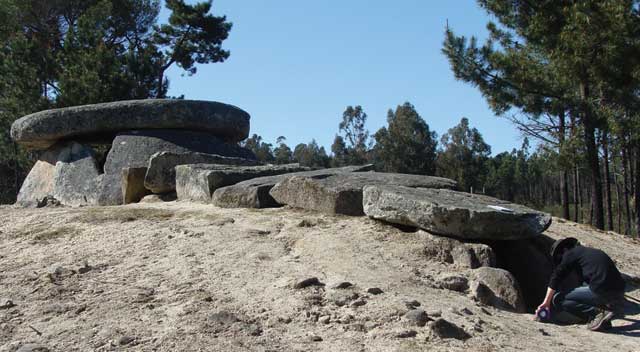
The Carregal do Sal Nucleus and Star Mountain Range
I think it's also important to realize that at this period the Bull of Heaven was the High God, into the Sumerian period Anu can be named the Great Bull Anu, this diminishes to were Anu is seen to control the Bull of Heaven and Inanna asks if she can borrow it, Gilgamesh kills it, but in the period were Ninshubur as Orion is the First Minister of Anu as Great Bull of Heaven this relationship would have been seen as naturally close in terms of the Constellations.
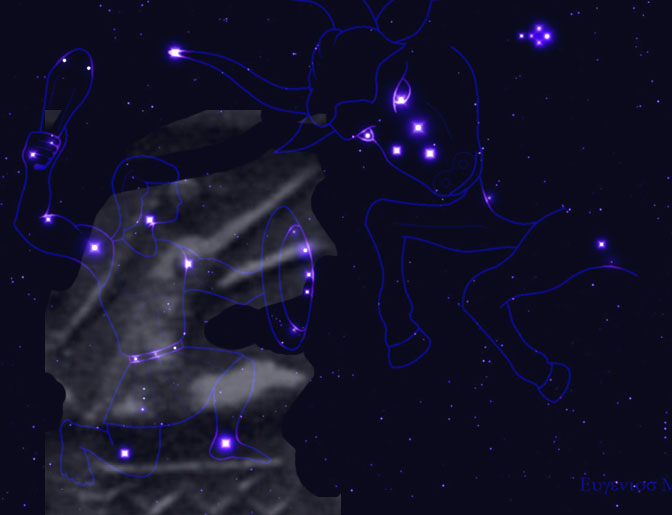

From within the chambers of all these dolmens it would not only be possible to see Star Mountain Range in the horizon, it would also be possible to see the stars Betelgeuse and Aldebaran rising above it.
These two stars are not only very bright they are also both red.Around 4,000 BC, when the megaliths were built, these stars would disappear from the night-sky at the end of February/beginning of March, not to be seen for two lunar cycles two and a half in the case of Betelgeuse), until they would reappear in the eastern sky at dawn before sunrise, just as spring was starting to reinvigorate the landscape.
This was when the Neolithic communities of the Mondego valley would “follow this star” and transition to the high pastures of the mountain range it illuminates. One can’t be sure whether it was Betelgeuse or Aldebaran that was being targeted, or even both, but the timing of the heliacal rising of the latter, closer to the Vernal Equinox, would make it better suited to be used as a seasonal marker. The presence of the Hyades star cluster around Aldebaran, giving it a “different shine”, would further support this, based on a (semi-)literal reading of the toponymical folktales about Star Mountain Range.
The Carregal do Sal Nucleus and Star Mountain Range
I think it's also important to realize that at this period the Bull of Heaven was the High God, into the Sumerian period Anu can be named the Great Bull Anu, this diminishes to were Anu is seen to control the Bull of Heaven and Inanna asks if she can borrow it, Gilgamesh kills it, but in the period were Ninshubur as Orion is the First Minister of Anu as Great Bull of Heaven this relationship would have been seen as naturally close in terms of the Constellations.

edit on Kam731205vAmerica/ChicagoFriday2531 by Kantzveldt because: (no reason given)
More evidence of a young woman pointing out a large black triangle in the sky 5,000 years ago...

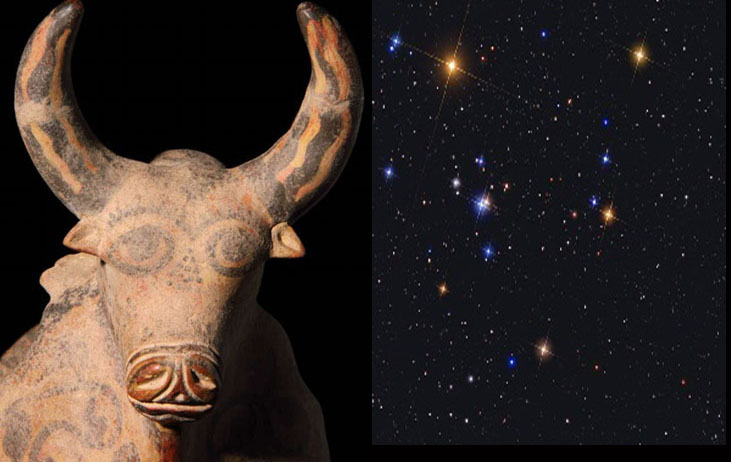
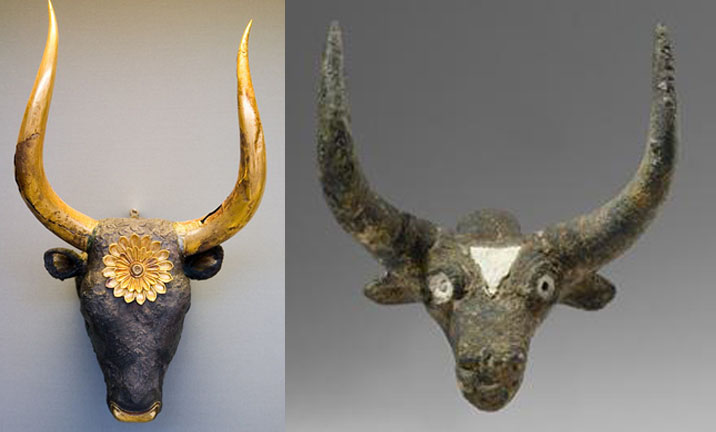
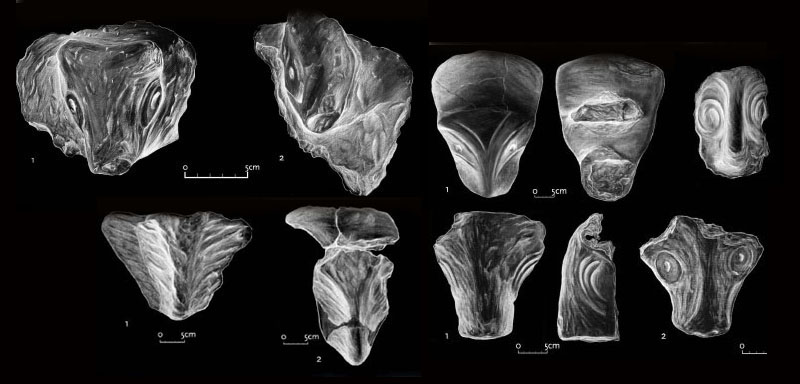
Holy Cow such awesome power!




Holy Cow such awesome power!
Here are some more seals if this type, interesting in that as in the case with others there is concern with a triangulated stellar motif

My thoughts on this are that it could possibly relate to a triple aspect of Godhead, in the sense of Anu. Enlil, Enki, associate with the head of the bull Taurus, this seems to carry through into illustration of cultic offerings.

Also very interesting is that the seated woman as Orion can be seen in conjunction with the spider Goddess Uttu who is considered to be seen on this seal

That then would be the relationship of Orion to Canis Major, and the horned star of power seen there Sirius
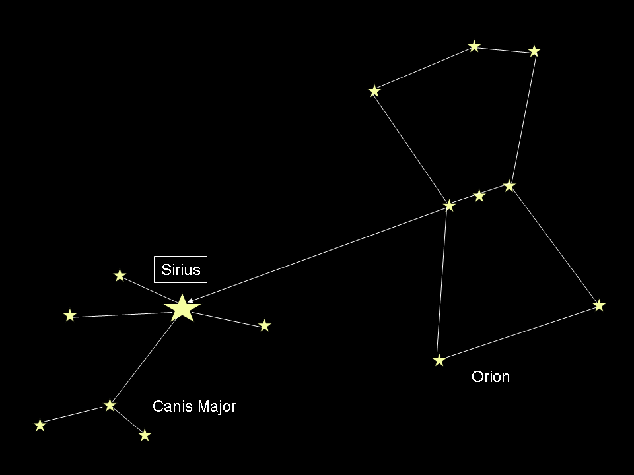
In the Uttu myth seed is removed from her body and used to create eight plants associated with eight parts of the body, Enki eats the plants and Ninhursag has to help him give birth to them in the form of eight Deities, what one sees there is the origin of the relationship of Canis Major and Sirius to healing physician Goddeses such as Bau, Gula, Ninisin and Ninsumen, and also to artificial insemination.
The star Sirius still has association with semen or the waters as it did in Egypt in terms of the Nile innundation, in the term Stella Maris, so i think in the Sumerian mythos of Enki and Uttu we see the origins of that.
Enki and Ninhursaga
The association of the spider Goddess of birth doesn't seem to have lasted, later Babylonian versions seem to be a bow and arrow configuration, which can be seen to correlate to the Egyptian Goddess of weaving Neith having such as her sacred symbols also, but i think the earlier has a great deal of correspondence worldwide
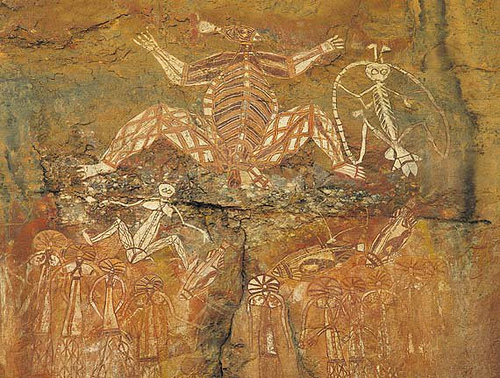

My thoughts on this are that it could possibly relate to a triple aspect of Godhead, in the sense of Anu. Enlil, Enki, associate with the head of the bull Taurus, this seems to carry through into illustration of cultic offerings.

Also very interesting is that the seated woman as Orion can be seen in conjunction with the spider Goddess Uttu who is considered to be seen on this seal

That then would be the relationship of Orion to Canis Major, and the horned star of power seen there Sirius

Uttu in Sumerian mythology is the goddess of weaving and clothing. She is both the child of Enki and Ninkur, and she bears seven new child/trees from Enki, the eighth being the Ti (Tree of "Life", associated with the "Rib"). When Enki then ate Uttu's children, Ninhursag cursed him with eight wounds and disappears. Uttu in Sumerian means "the woven" and she was illustrated as a spider in a web
In the Uttu myth seed is removed from her body and used to create eight plants associated with eight parts of the body, Enki eats the plants and Ninhursag has to help him give birth to them in the form of eight Deities, what one sees there is the origin of the relationship of Canis Major and Sirius to healing physician Goddeses such as Bau, Gula, Ninisin and Ninsumen, and also to artificial insemination.
The star Sirius still has association with semen or the waters as it did in Egypt in terms of the Nile innundation, in the term Stella Maris, so i think in the Sumerian mythos of Enki and Uttu we see the origins of that.
Enki seduces Uttu "by promising marriage and offering her various vegetables, which he had helped a gardener grow, as wedding gifts" . After enjoying her favors, Enki abandons Uttu. Ninhursag helps the distressed girl by removing the semen from her body. From this removed (planted?) semen grow up eight plants.
Enki then walks by, sees the plants, and promptly gobbles up all eight of them. (In this story Enki shows the cleverness and the unrestrained appetites--for both sex and food--of a typical trickster.) The plants begin to develop in Enki's body, and, since he is not equipped to give birth, they make him very ill
Since Enki has eight pains in eight different parts of his body (corresponding to the eight plants he ate), the mother goddess Ninhursag gives birth to eight different healing goddesses for each one of his aches. To do this, she somehow puts Enki in her vagina and then gives birth to each healing goddess after asking him where he hurts. (Thus in some way, each healing goddess represents the birth of one of the eight plants.
Enki and Ninhursaga
The association of the spider Goddess of birth doesn't seem to have lasted, later Babylonian versions seem to be a bow and arrow configuration, which can be seen to correlate to the Egyptian Goddess of weaving Neith having such as her sacred symbols also, but i think the earlier has a great deal of correspondence worldwide

"For the little ones to whom I have given birth may rewards not be lacking. Ab-u shall become king of the grasses, Ninsikila shall become lord of Magan, Ningiriutud shall marry Ninazu, Ninkasi shall be what satisfies the heart, Nazi shall marry Nindara, Azimua shall marry Ninĝišzida, Ninti shall become the lady of the month, and Ensag shall become lord of Dilmun."
edit on Kam831230vAmerica/ChicagoTuesday1931 by Kantzveldt because: (no reason given)
new topics
top topics
-
January 6th report shows disturbing trend (nobody is shocked)
US Political Madness: 15 hours ago, 22 flags -
The Truth about Migrant Crime in Britain.
Social Issues and Civil Unrest: 16 hours ago, 11 flags -
Let's talk planes.
General Chit Chat: 13 hours ago, 5 flags -
Inexplicable military simulation - virtual reality showdown in the night..
The Gray Area: 15 hours ago, 2 flags
active topics
-
Greatest thing you ever got, or bought?
General Chit Chat • 23 • : DAVID64 -
ILLUMINATION: Dimensions / Degrees – Da Vincis Last Supper And The Philosophers Stone
Secret Societies • 12 • : Compendium -
The Truth about Migrant Crime in Britain.
Social Issues and Civil Unrest • 13 • : TimBurr -
Stuck Farmer And His Queue Jumping Spawn
Rant • 8 • : TimBurr -
Trudeau Resigns! Breaking
Mainstream News • 68 • : MindBodySpiritComplex -
Live updates: Congress meets to certify Trump's presidential election victory
US Political Madness • 19 • : KrustyKrab -
-@TH3WH17ERABB17- -Q- ---TIME TO SHOW THE WORLD--- -Part- --44--
Dissecting Disinformation • 3953 • : 777Vader -
Judge rules president-elect Donald Trump must be sentenced in 'hush money' trial
US Political Madness • 37 • : JadedGhost -
Post A Funny (T&C Friendly) Pic Part IV: The LOL awakens!
General Chit Chat • 7997 • : KrustyKrab -
Meta Llama local AI system is scary good
Science & Technology • 42 • : Arbitrageur
18
